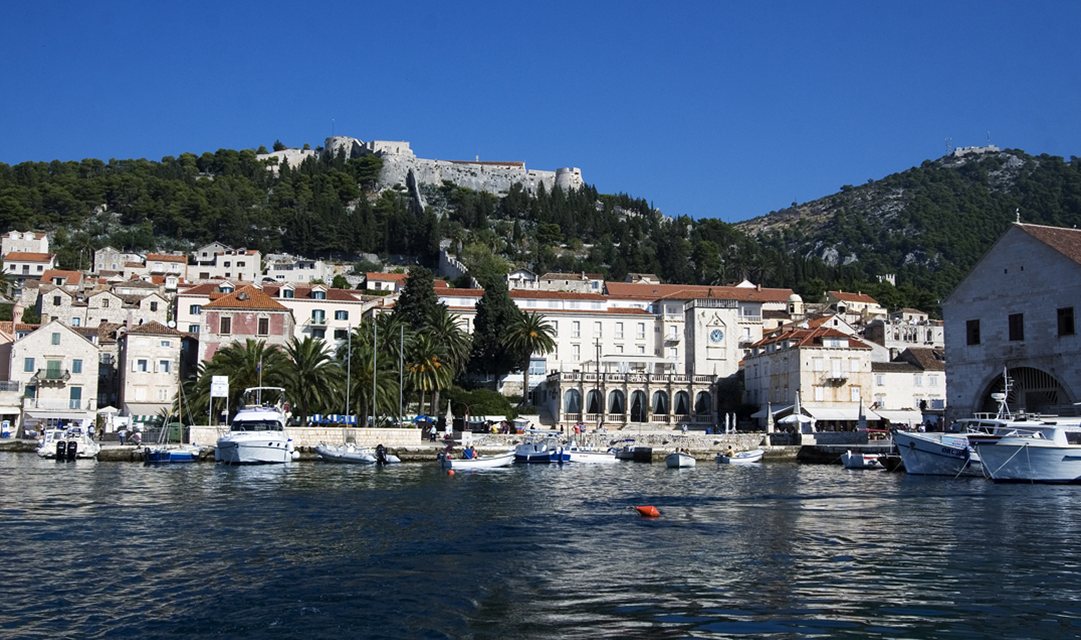Hvar travel guide
With its lush forests, sweeping sveti Nikola mountain range, the omnipresent aroma of lavender, and a sprinkle of historic towns, Hvar is one of the most enticing of Croatia’s Adriatic islands.
On the downside it is the most visited Croatian island and tends to be more expensive than other places. The Greeks occupied it in the 4th century, but it was the Venetians in the 15th and 16th centuries who left their stamp on the architecture, much appreciated by the many Italians who visit on Adriatic ferries in summer.
Hvar Town
Many visitors arrive at Stari Grad, but the real gem is Hvar Town, enjoying an idyllic setting in a protected island-studded bay, with the old town unfolding on a pine-covered slope that reaches to the water’s edge, and clumps of wild lavender and herbs growing among the Venetian palaces. In high season the town and its harbour are packed with shiny yachts and tour boats and the pavement cafés and trendy bars are bursting at the seams. All available rooms usually go by mid-morning; those looking to appreciate the island’s special beauty and atmosphere would do best to visit outside the main summer season.
Hvar attractions
St Stephen’s Cathedral, the focal point of Hvar Town
At the end of Trg Sveti Stjepana, you come to St Stephen’s Cathedral, visible from all over Hvar Town. In 1571 the Ottomans razed the original Benedictine monastery on the site, just before their landmark defeat at the Battle of Lepanto. Today’s incarnation was built in Venetian Renaissance style in the 16th and 17th centuries. You can usually enter the cathedral shortly before Mass. If you examine the nave closely, you will notice segments of the earlier cathedral. Also worthy of attention is the understated 13th-century Madonna and Child on the altar.
Incomparable views from the Spanish Fortress
The steep hike from sea level up through the hillside park to the Spanish Fortress is well worth it for the panoramic views that the ramparts offer. The town walls join each flank and Hvar Town spreads around the harbour below, while Hvar’s offshore islands and the island of Vis are visible further afield. The fortifications were commissioned by the Habsburg monarch Charles V in 1551; today the fort is used as a café during the day and a nightclub in the evening. It also has a collection of rare weapons.
Stari Grad, Hvar's first major settlement
Stari Grad (Old Town) on Hvar’s north coast earned its name on account of being the island’s first major centre before the Venetians developed Hvar Town. Stari Grad was the home of the 16th-century poet and visionary Petar Hektorovic, who attempted to build a sanctuary in which citizens could seek refuge when the town came under attack. Unfortunately the Tvrdalj was never completed, and now doubles as an ethnographic museum as well as a memorial to the poet. Next door is the nautically themed Stari Grad Museum.
Just a short stroll away is Stari Grad’s other main attraction, the Dominican Monastery, which houses a museum with a number of Hektorovic’s belongings.
If you like upmarket Hvar then explore the rest of Central Dalmatia
Read more from the travel guide to Croatia









